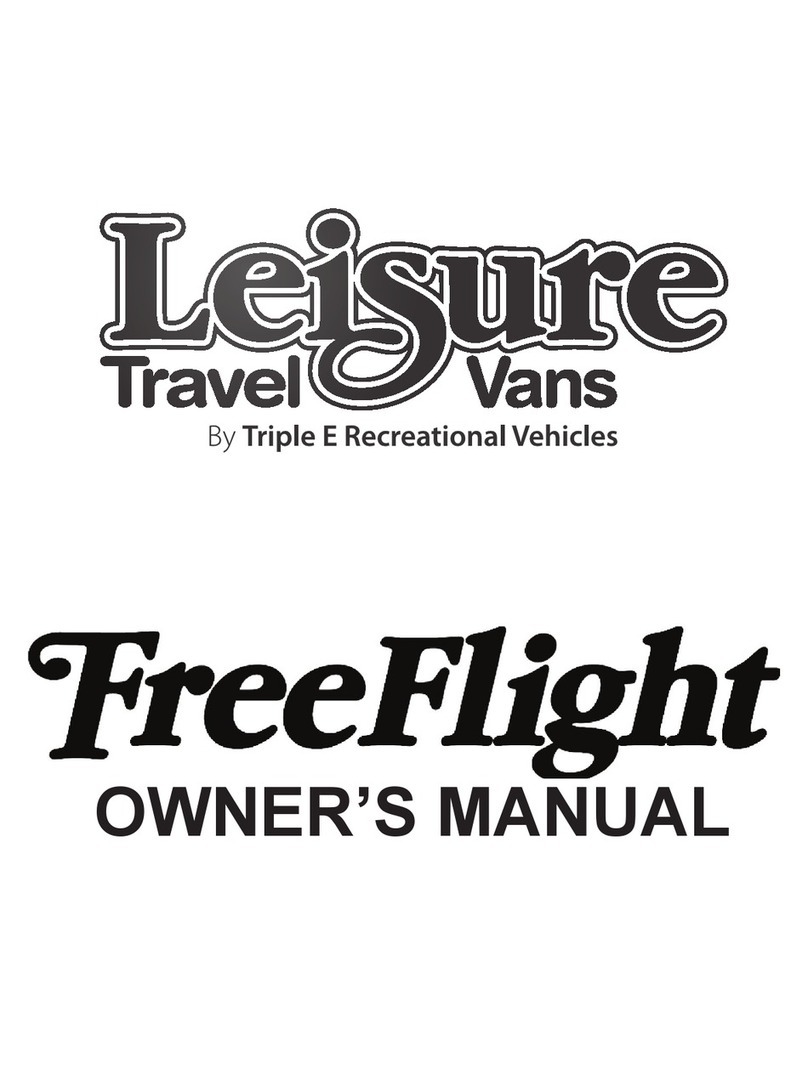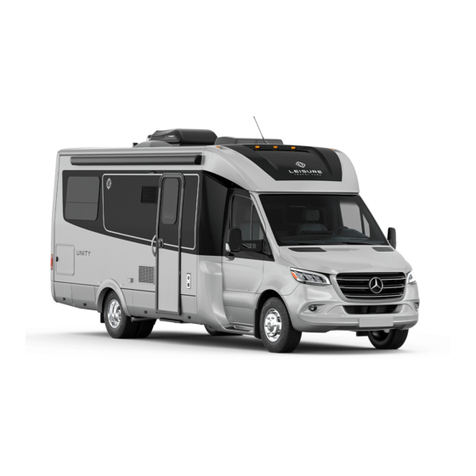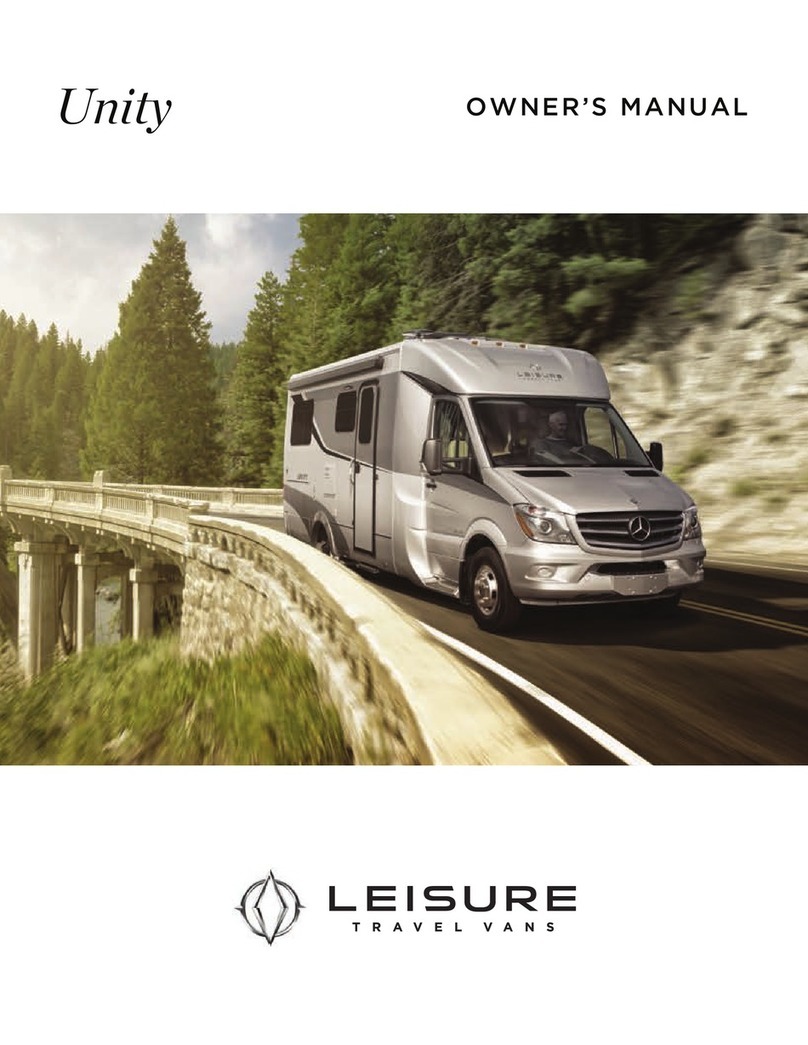
Unity Motorhome Introduction
1-9
Service Assistance
Your dealer will assist you with any additional information you need and to answer any questions you may have about
the operation of your Motorhome. When it comes time for service, remember that your dealer knows your Motorhome
best and is dedicated to your satisfaction. Your dealer will provide quality maintenance and assistance during the
period of your ownership. Leisure Travel Vans stongly recommends that you follow a regular maintenance schedule to
keep your Motorhome functioning at its best.
Should you require warranty assistance while travelling, call:
Triple E RV: 1-877-992-9906
Canada Sprinter Customer Service: 1-800-387-0100 www.thesprinter.ca
US Sprinter Customer Service: 1-877-762-8267 www.mbsprinterusa.com
Reporting Safety Defects
If you believe that your Motorhome has a safety defect of any kind that could cause injury, or death, contact Leisure
Travel Vans immediately. Also, contact the National Highway Trafc Safety Administration (NHTSA) in the US, or
Transport Canada to report your concern.
NHTSA will investigate the concern should there be a number of similar complaints. They have the authority to order
a recall and repair campaign depending on the nature and severity of the problem.
NHTSA may be reached by using the Auto Safety Hotline at 1-800-424-9393 (366-0123 in the Washington, DC area)
or by writing to: NHTSA, US Department of Transportation, Washington, DC 20590. The Hotline will also provide you
with additional information on motor vehicle safety.
In Canada, call 1-613-993-9851 or write to: Transport Canada and Road Safety, 2780 Shefeld Road, Ottawa, Ontario
K1B 3V9.
Coach Specications
Chassis Sprinter
Engine - MBE 3.0L V6 Diesel
Transmission - Mercedes 5 speed Auto
w/Autostick
U24MB U24CB U24IB U24TB
GVWR - lbs (kg)
GCWR - lbs (kg)
11030 (5003)
15250 (6917)
11030 (5003)
15250 (6917)
11030 (5003)
15250 (6917)
11030 (5003)
15250 (6917)
Wheelbase - in (mm) 170.3” (4326) 170.3” (4326) 170.3” (4326) 170.3” (4326)
Length Not incl spare - ft (mm) 24’7” (7493) 24’7” (7493) 24’7” (7493) 24’7” (7493)
Width - ft (mm) 7’10” (2388) 7’10” (2388) 7’10” (2388) 7’10” (2388)
Height Incl A/C - ft (mm) 10’6” (3200) 10’6” (3200) 10’6” (3200) 10’6” (3200)
*Fresh Water Capacity - gal (L) 30 (114) 36 (137) 36 (137) 36 (137)
Black Water Holding Capacity - gal (L) 29 (110) 29 (110) 29 (110) 29 (110)
Grey Holding Tank Capacity - gal (L) 37 (140) 37 (140) 37 (140) 37 (140)
Fuel Capacity - gal (L) 26.4 (100) 26.4 (100) 26.4 (100) 26.4 (100)
Propane Capacity - gal (L) 13.2 (50) 13.2 (50) 13.2 (50) 13.2 (50)
Exterior Storage Capacity 38 cu. ft. 40 cu. ft. 70 cu. ft. 62 cu. ft.
*Includes 6 gal water heater. All Capacities in US Gallons


































